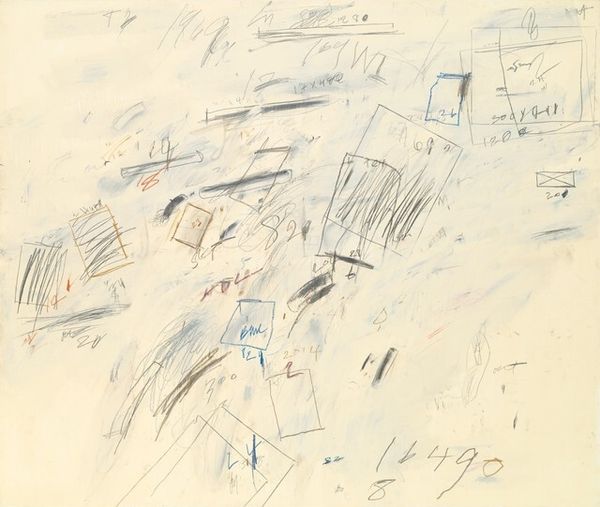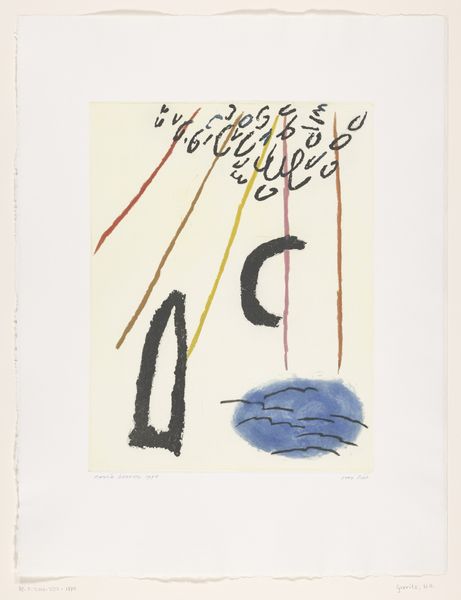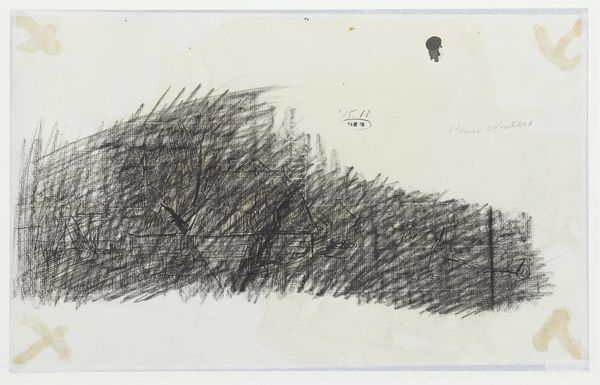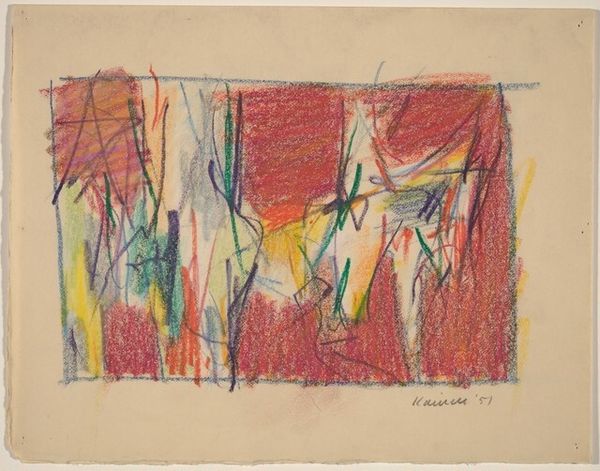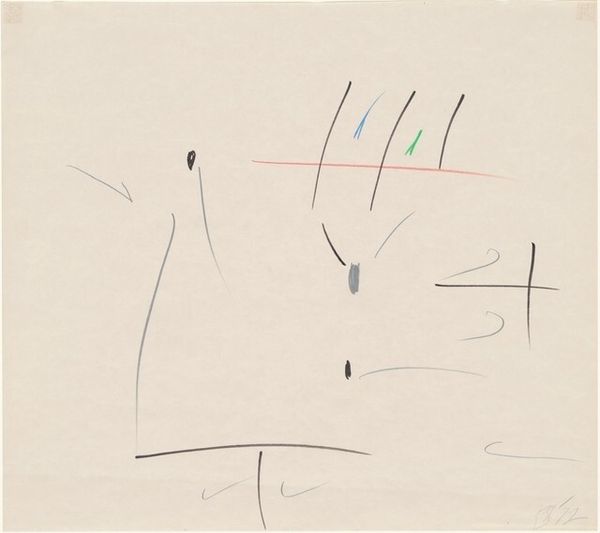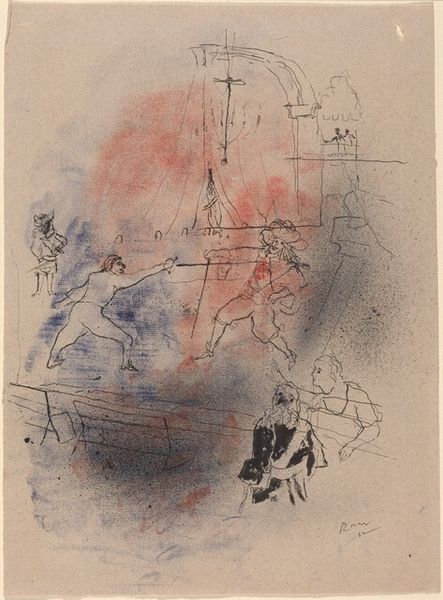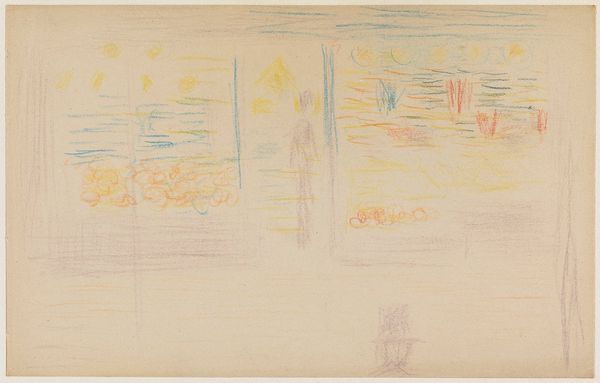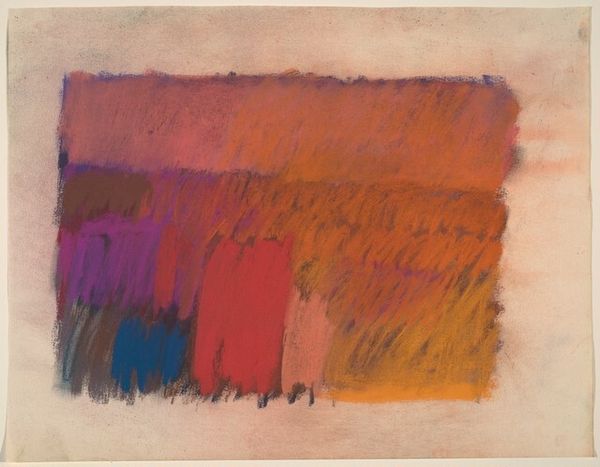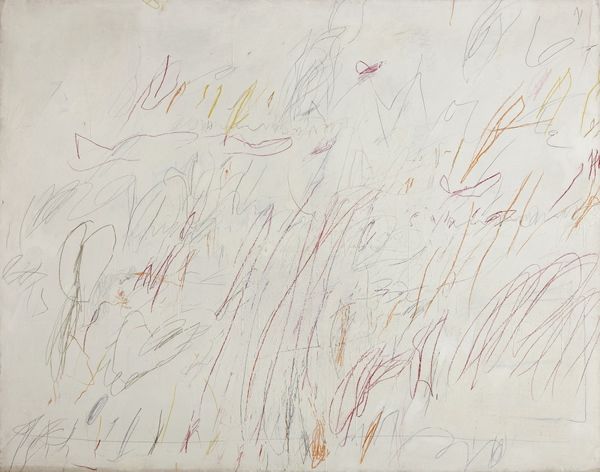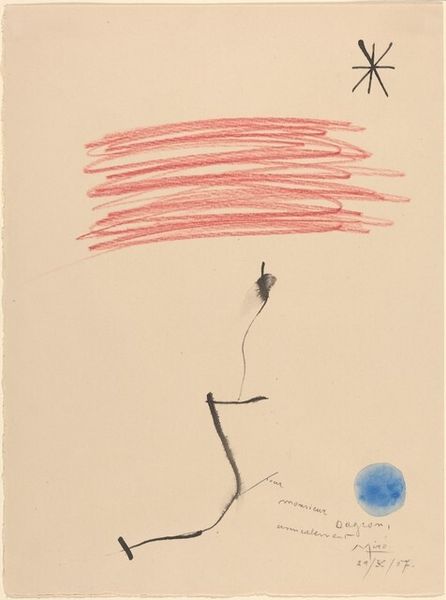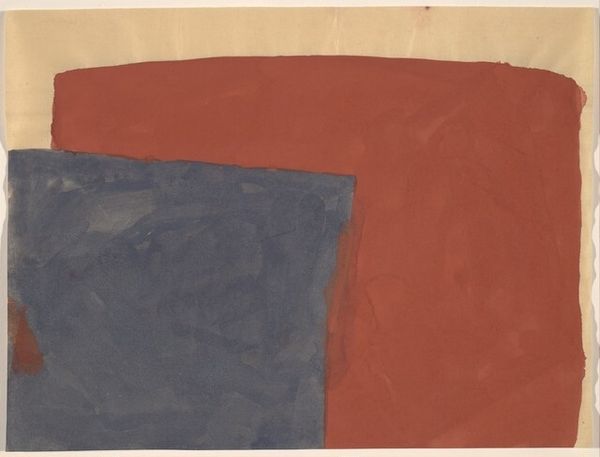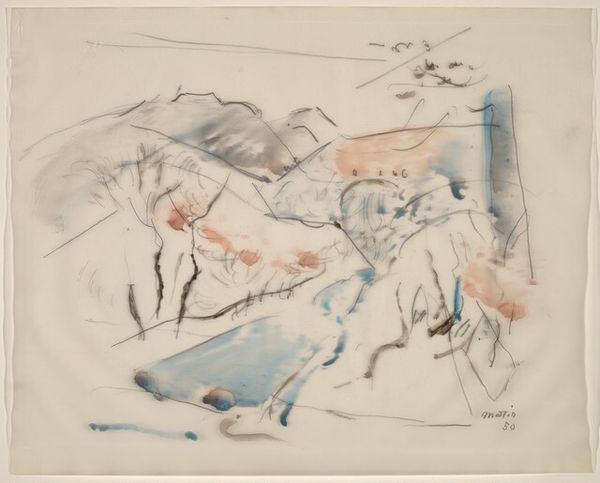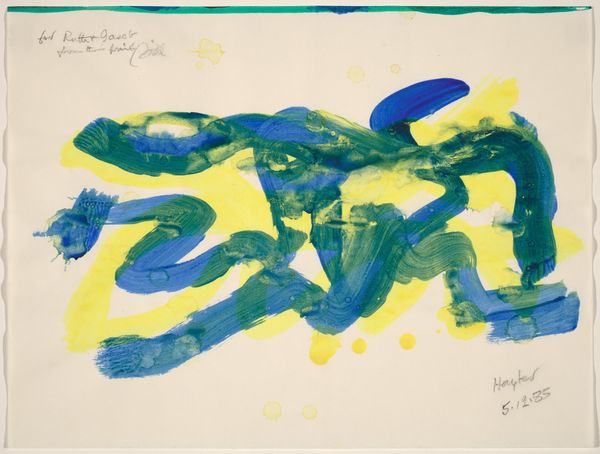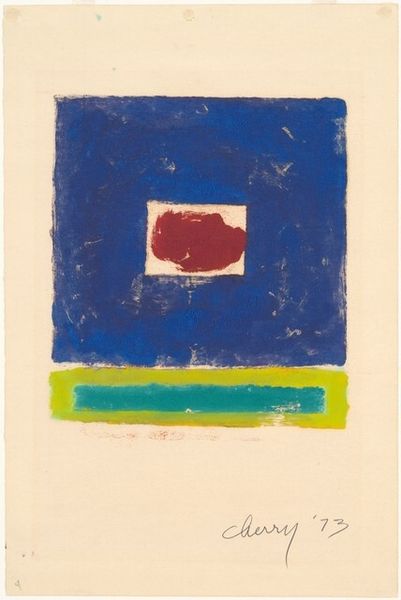
drawing, pencil
#
drawing
#
blue ink drawing
#
landscape
#
pencil
Copyright: Andre Masson,Fair Use
Curator: Looking at André Masson’s "Florence at Dusk," created in 1958 using pencil and blue ink, I find myself pondering how places become symbols themselves. What do you make of it? Editor: Immediately, I am struck by the liminal quality. It feels as if the city itself is a memory fading into the twilight, represented only by faint architectural forms and color. Curator: Masson was deeply influenced by surrealism, and that shows here in the dreamlike treatment. Florence, a historical nexus of the Renaissance, gets dissolved in abstraction. Even the colours feel archetypal, reminiscent of frescoes. Editor: Exactly. And notice the thin horizontal brushstrokes depicting what appears to be a body of water? The image becomes a meditation on temporality, the weight of history pressing upon the transient present moment. Where are we really, when "Florence" can be so fleetingly presented? Curator: It evokes that idea of palimpsest, the city built upon cities, history layered upon history. This is Florence as felt, more than Florence as seen. And the red slash... what do you make of that bold choice? Editor: It is quite striking. Is it setting sun or some kind of socio-political wound, or the fiery spirit of artistic expression? The fact that we are not certain only deepens the piece's resonance. Perhaps the very essence of what it means to observe. It doesn't seek to answer; it only raises questions. Curator: I see the slash as Masson injecting dynamism into an otherwise placid scene. It symbolizes a breaking through, perhaps, defying the weight of tradition represented by Florence herself. Editor: It certainly succeeds. Together, the elements of the composition offer more than just a view of Florence; it critiques history, progress, and what we've been told the "Renaissance" means as much as its surface aesthetics. A bold undertaking within the limits of pencil and ink. Curator: Yes. Masson’s Florence encourages us to consider how we project our own histories and emotions onto places, transmuting the seen into the felt. A landscape infused with something intangible. Editor: And how a simple drawing can hold such a capacious, questioning presence, daring us to confront the narratives we construct. I won't look at cityscapes quite the same way again.
Comments
No comments
Be the first to comment and join the conversation on the ultimate creative platform.
